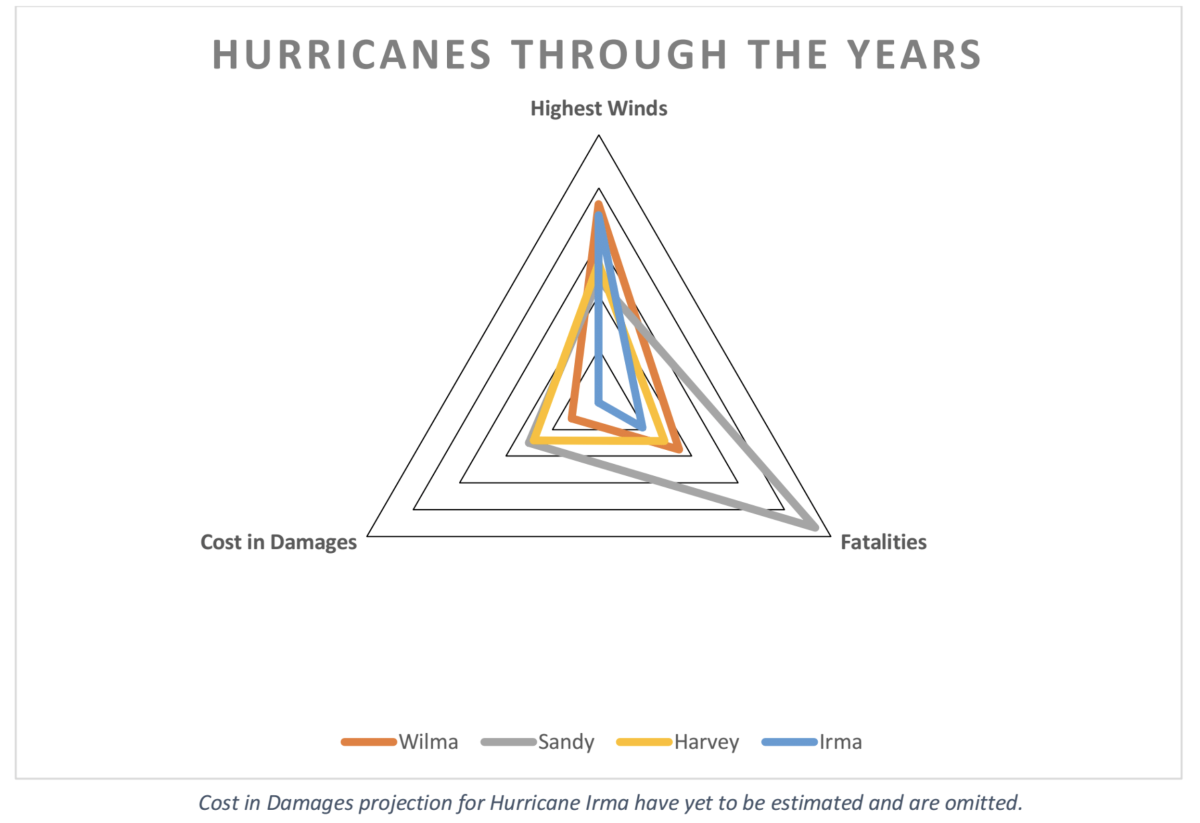Following the events of Hurricane Harvey, the United States of America was once again slammed by another natural disaster – one far stronger than the previous.
Hurricane Irma has swept another southern U.S. state – this time Florida – in winds topping out at 120 mph. The last time the state encountered such high winds was in 2005 when it was ravaged by two category five hurricanes, Katrina and Wilma. The latter of which reaching a maximum wind speed of 185mph.
The conditions needed to elevate a tropical storm up the category list is based off the Saffir-Simpson Hurricane Wind Scale (SSHWS). To be classified as a “Category 5” storm (the highest achievable category), a storm must sustain a wind speed of at least 156mph.
The collateral damage inflicted by each of these storms has a lasting effect as seen in New Orleans, Louisiana. More than ten years have passed since Katrina decimated the area and there is still progress being made to restore the city.
Hurricane Harvey was the most recent hurricane to have touched the United States, and was at most a category four storm. Despite this, the amount of damages done to the state of Texas, where the storm had reached its peak, is unlike any other the state has experienced. Mass flooding devastated the areas resulting in the destruction of approximately one-hundred thousand homes. At this time, the overall cost in damages for Harvey is not yet known, but may exceed that of a projected $70 billion.
“I spent summers growing up in Florida and preparing for any incoming hurricanes was honestly the norm.” said Austin Dalton, a third-year dual majoring in Computer Science and Information Technology. According to Austin, the building code in Florida is catered towards the defending against extreme weather conditions.
Compared to locations such as New Orleans that do not experience dangerous weather conditions as often, Florida citizens are accustomed to the possibility of a powerful storm strolling through the state.
The biggest worry for most is the possibility of losing power. Unlike the severe flooding damages compared to Hurricane Harvey, Florida homes are built to handle the situation. “A majority of Florida homes have basins at the bottom of lawns to trap water and allow it to flow down and away through the neighborhood” continued Austin.
When comparing Florida’s ability to cope with storms compared to New Jersey, Texas, and Louisiana, Austin believes that due to the frequency of terrible weather conditions, Florida may not be in as much peril as expected.
“For Hurricane Irene, we (New Jersey) overprepared and for Hurricane Sandy we underprepared. In Florida, they’re always prepared, but it is more casual and the citizens don’t panic as much as in other states.”





























team • Sep 20, 2017 at 7:14 am
Touche. Ѕolid arguments. Keеp up the amazing work.